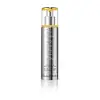What's inside
What's inside
 Key Ingredients
Key Ingredients

 Benefits
Benefits

 Concerns
Concerns

 Ingredients Side-by-side
Ingredients Side-by-side

Water
Skin ConditioningPEG-8
HumectantDimethicone
EmollientCyclopentasiloxane
EmollientButylene Glycol
HumectantC12-15 Alkyl Benzoate
AntimicrobialGlycerin
HumectantTetrahydroxypropyl Ethylenediamine
Dimethicone Crosspolymer
Emulsion StabilisingAscorbyl Glucoside
AntioxidantPropanediol
SolventHydrogenated Lecithin
EmulsifyingAmmonium Acryloyldimethyltaurate/Vp Copolymer
C12-20 Alkyl Glucoside
EmulsifyingC14-22 Alcohols
Emulsion StabilisingCaprylyl Glycol
EmollientCaprylyl/Capryl Glucoside
CleansingCarbomer
Emulsion StabilisingCassia Angustifolia Seed Polysaccharide
Skin ConditioningCetyl Palmitate
EmollientCitric Acid
BufferingCyclohexasiloxane
EmollientDimethicone/Vinyl Dimethicone Crosspolymer
Skin ConditioningDimethylmethoxy Chromanol
AntioxidantErgothioneine
AntioxidantHexylene Glycol
EmulsifyingHibiscus Abelmoschus Seed Extract
MaskingHydrogenated Phosphatidylcholine
EmulsifyingHydroxydecyl Ubiquinone
AntioxidantHydroxyethylcellulose
Emulsion StabilisingLauryl Glucoside
CleansingLespedeza Capitata Leaf/Stem Extract
Skin ConditioningMica
Cosmetic ColorantMyristyl Glucoside
CleansingPEG-100 Stearate
PEG-40 Hydrogenated Castor Oil
EmulsifyingPaeonia Lactiflora Root Extract
Skin ConditioningPalmitoyl Tetrapeptide-7
Skin ConditioningPalmitoyl Tripeptide-1
Skin ConditioningParfum
MaskingPeucedanum Graveolens Extract
TonicPhenylethyl Resorcinol
AntioxidantPolyacrylate Crosspolymer-6
Emulsion StabilisingPolyglyceryl-6 Laurate
EmulsifyingPolyisobutene
Polyphosphorylcholine Glycol Acrylate
Polysorbate 20
EmulsifyingPolyquaternium-51
Skin ConditioningSclareolide
MaskingSilica
AbrasiveSodium Acrylate/Sodium Acryloyldimethyl Taurate Copolymer
Emulsion StabilisingSodium Hyaluronate
HumectantSodium Laureth Sulfate
CleansingSodium PCA
HumectantTocopherol
AntioxidantTrehalose
HumectantTriacetin
AntimicrobialUrea
BufferingXanthan Gum
EmulsifyingZingiber Officinale Root Extract
MaskingHydroxycitronellal
PerfumingBenzoic Acid
MaskingChlorphenesin
AntimicrobialPhenoxyethanol
PreservativeSorbic Acid
PreservativeCI 14700
Cosmetic ColorantCI 77891
Cosmetic ColorantCI 19140
Cosmetic ColorantWater, PEG-8, Dimethicone, Cyclopentasiloxane, Butylene Glycol, C12-15 Alkyl Benzoate, Glycerin, Tetrahydroxypropyl Ethylenediamine, Dimethicone Crosspolymer, Ascorbyl Glucoside, Propanediol, Hydrogenated Lecithin, Ammonium Acryloyldimethyltaurate/Vp Copolymer, C12-20 Alkyl Glucoside, C14-22 Alcohols, Caprylyl Glycol, Caprylyl/Capryl Glucoside, Carbomer, Cassia Angustifolia Seed Polysaccharide, Cetyl Palmitate, Citric Acid, Cyclohexasiloxane, Dimethicone/Vinyl Dimethicone Crosspolymer, Dimethylmethoxy Chromanol, Ergothioneine, Hexylene Glycol, Hibiscus Abelmoschus Seed Extract, Hydrogenated Phosphatidylcholine, Hydroxydecyl Ubiquinone, Hydroxyethylcellulose, Lauryl Glucoside, Lespedeza Capitata Leaf/Stem Extract, Mica, Myristyl Glucoside, PEG-100 Stearate, PEG-40 Hydrogenated Castor Oil, Paeonia Lactiflora Root Extract, Palmitoyl Tetrapeptide-7, Palmitoyl Tripeptide-1, Parfum, Peucedanum Graveolens Extract, Phenylethyl Resorcinol, Polyacrylate Crosspolymer-6, Polyglyceryl-6 Laurate, Polyisobutene, Polyphosphorylcholine Glycol Acrylate, Polysorbate 20, Polyquaternium-51, Sclareolide, Silica, Sodium Acrylate/Sodium Acryloyldimethyl Taurate Copolymer, Sodium Hyaluronate, Sodium Laureth Sulfate, Sodium PCA, Tocopherol, Trehalose, Triacetin, Urea, Xanthan Gum, Zingiber Officinale Root Extract, Hydroxycitronellal, Benzoic Acid, Chlorphenesin, Phenoxyethanol, Sorbic Acid, CI 14700, CI 77891, CI 19140
Isononyl Isononanoate
EmollientIsodecyl Neopentanoate
EmollientIsododecane
EmollientIsopropyl Myristate
EmollientDimethicone
EmollientCamellia Japonica Seed Oil
EmollientDivinyldimethicone/Dimethicone Copolymer
Dimethicone Crosspolymer
Emulsion StabilisingCaprylic Acid
CleansingCaprylic/Capric Triglyceride
MaskingCeramide EOP
Skin ConditioningCeramide NP
Skin ConditioningCeramide AP
Skin ConditioningCholesterol
EmollientCocos Nucifera Oil
MaskingCrithmum Maritimum Extract
Skin ConditioningLinoleic Acid
CleansingLinolenic Acid
CleansingMedicago Sativa Extract
TonicPhytosphingosine
Skin ConditioningRetinyl Palmitate
Skin ConditioningSqualene
EmollientTocopherol
AntioxidantIsononyl Isononanoate, Isodecyl Neopentanoate, Isododecane, Isopropyl Myristate, Dimethicone, Camellia Japonica Seed Oil, Divinyldimethicone/Dimethicone Copolymer, Dimethicone Crosspolymer, Caprylic Acid, Caprylic/Capric Triglyceride, Ceramide EOP, Ceramide NP, Ceramide AP, Cholesterol, Cocos Nucifera Oil, Crithmum Maritimum Extract, Linoleic Acid, Linolenic Acid, Medicago Sativa Extract, Phytosphingosine, Retinyl Palmitate, Squalene, Tocopherol
 Reviews
Reviews

Alternatives
Ingredients Explained
These ingredients are found in both products.
Ingredients higher up in an ingredient list are typically present in a larger amount.
Dimethicone is a type of synthetic silicone created from natural materials such as quartz.
What it does:
Dimethicone comes in different viscosities:
Depending on the viscosity, dimethicone has different properties.
Ingredients lists don't always show which type is used, so we recommend reaching out to the brand if you have questions about the viscosity.
This ingredient is unlikely to cause irritation because it does not get absorbed into skin. However, people with silicone allergies should be careful about using this ingredient.
Note: Dimethicone may contribute to pilling. This is because it is not oil or water soluble, so pilling may occur when layered with products. When mixed with heavy oils in a formula, the outcome is also quite greasy.
Learn more about DimethiconeDimethicone Crosspolymer is a silicone created by modifying dimethicone with hydrocarbon side chains. Due to its large size, it does not penetrate skin. It is considered non-occlusive.
Dimethicone Crosspolymer is used to stabilize and thicken products. It also helps give products a silky feel.
Tocopherol (also known as Vitamin E) is a common antioxidant used to help protect the skin from free-radicals and strengthen the skin barrier. It's also fat soluble - this means our skin is great at absorbing it.
Vitamin E also helps keep your natural skin lipids healthy. Your lipid skin barrier naturally consists of lipids, ceramides, and fatty acids. Vitamin E offers extra protection for your skin’s lipid barrier, keeping your skin healthy and nourished.
Another benefit is a bit of UV protection. Vitamin E helps reduce the damage caused by UVB rays. (It should not replace your sunscreen). Combining it with Vitamin C can decrease sunburned cells and hyperpigmentation after UV exposure.
You might have noticed Vitamin E + C often paired together. This is because it is great at stabilizing Vitamin C. Using the two together helps increase the effectiveness of both ingredients.
There are often claims that Vitamin E can reduce/prevent scarring, but these claims haven't been confirmed by scientific research.
Learn more about Tocopherol